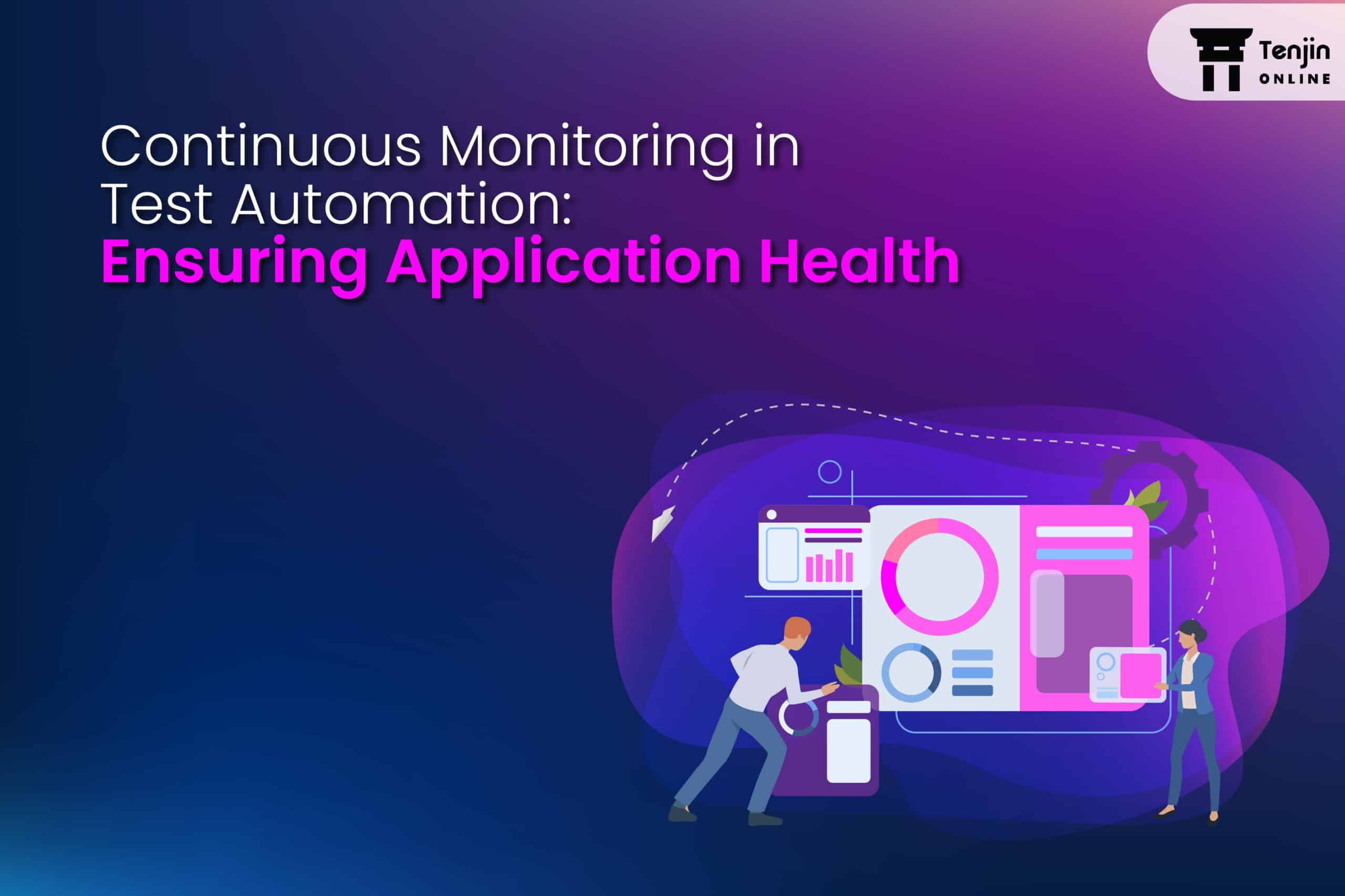
In the rapidly evolving world of software development, the need for efficient and reliable test automation has become of paramount importance. Test automation enables organizations to validate the functionality, performance, and stability of their software applications with speed and accuracy. However, running automated tests alone is not enough to guarantee the health of an application. Continuous monitoring in test automation plays a crucial role in ensuring the overall well-being of the system under test.
Continuous monitoring involves the regular observation and analysis of various metrics and indicators to assess the system’s performance and health. By integrating monitoring tools and practices into the test automation framework, organizations can gain valuable insights into the system’s behavior, detect anomalies, and address potential issues before they impact end-users.
What is Continuous Monitoring in Test Automation?
Continuous monitoring in test automation is a critical practice that complements automation efforts and enables teams to detect issues early, improve efficiency, and deliver a better user experience. Continuous monitoring involves real-time tracking and analysis of key metrics, such as test execution results, system performance, and application behavior. It provides valuable insights into the health of the application under test and helps teams identify potential issues or bottlenecks. By continuously monitoring various aspects of the testing process, organizations can proactively address problems and make data-driven decisions to improve their overall testing strategy.
Continuous monitoring involves the use of specialized tools and techniques that gather data from various sources, such as test scripts, test environments, and production systems. These tools continuously track and measure different parameters, including test execution progress, test case results, resource utilization, system logs, and performance metrics. The collected data is then analyzed using predefined thresholds and rules to identify any deviations or anomalies. This analysis helps in detecting failures, errors, bottlenecks, or unexpected behavior in the software under test. It provides insights into the overall health and stability of the system, highlighting areas that require attention or further investigation.
The monitoring process typically generates reports and notifications to relevant stakeholders, such as testers, developers, and project managers. These reports offer a comprehensive view of the testing progress, highlighting any issues that need immediate attention and providing valuable insights for decision-making.
Key Benefits of Continuous Monitoring in Test Automation?
Some of the prominent benefits of continuous monitoring in test automation are:
Early Detection of Performance Issues
Continuous monitoring allows organizations to capture performance-related metrics, such as response times, resource utilization, and throughput, during test execution. By analyzing these metrics in real-time or through historical data, organizations can identify performance bottlenecks, scalability concerns, or resource constraints. Early detection of these issues enables teams to optimize the system and ensure its stability, resulting in enhanced user experience.
Tracking Test Coverage
While test automation aims to cover a broad range of scenarios, it’s essential to ensure that critical areas of the application are thoroughly tested. Continuous monitoring provides visibility into the extent of test coverage, highlighting any gaps or areas that require additional attention. This information empowers teams to make informed decisions about test priorities and allocate resources effectively to maximize test coverage and minimize risks.
Seamless Collaboration and Communication
Test execution results and metrics can be shared in real-time, allowing developers, testers, and other stakeholders to have a common understanding of the system’s behavior and test outcomes. This shared visibility enables faster and more effective collaboration in resolving issues, optimizing tests, and making informed decisions based on reliable data.
Active Issue Resolution
Monitoring the system under test continuously provides valuable insights into its behavior and usage patterns. By leveraging this data, organizations can actively address potential issues and bugs. For instance, if a particular functionality consistently shows a higher error rate during automated tests, it indicates a possible defect that needs immediate attention. With continuous monitoring, teams can quickly identify the root cause of the problem and rectify it, minimizing the impact on end-users.
Real-time Alerts and Notifications
Continuous monitoring tools are designed to provide real-time alerts and notifications when predefined thresholds or conditions are met. These alerts can be set up to trigger based on various metrics, such as CPU usage, memory consumption, or error rates. By configuring these alerts in the test automation framework, organizations can immediately respond to critical situations and minimize downtime. Such proactive measures help ensure system health and reduce the risk of catastrophic failures.
Performance Benchmarking
Continuous monitoring enables organizations to establish performance baselines for their systems. By collecting and analyzing performance metrics over time, teams can set benchmarks that represent the system’s expected behavior under normal conditions. These benchmarks serve as reference points for comparing system performance during subsequent test runs. Any deviation from the established baselines can alert teams to potential issues, enabling them to investigate and rectify problems promptly.
Trend Analysis and Historical Reporting
Continuous monitoring provides a wealth of historical data that can be used for trend analysis and reporting purposes. By visualizing performance trends, organizations can gain insights into the system’s behavior over time and identify patterns or anomalies. Historical reports can help teams make informed decisions, track system improvements, and plan for future enhancements or capacity upgrades.
Conclusion
Incorporating continuous monitoring into the test automation process is vital for ensuring the health and reliability of software systems. By leveraging monitoring tools and practices, organizations can detect performance issues early, proactively address potential defects, receive real-time alerts, benchmark system performance, and analyze historical data. These benefits collectively contribute to enhanced system stability, improved user experience, and the overall success of software applications in the market.
As software development continues to advance, embracing continuous monitoring in test automation will undoubtedly be a key differentiator for organizations striving to deliver high-quality, robust software systems to their users.


